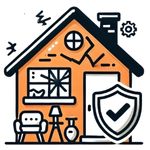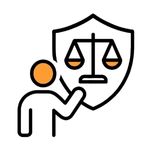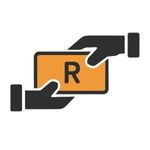
Household contents insurance provides practical protection for your belongings against theft, fire, and accidental damage. In South Africa, where such risks are common, this cover offers financial support when personal items are lost or damaged. It is suitable for both homeowners and tenants, helping to safeguard valuables like electronics, furniture, and personal effects. By having this insurance in place, you can avoid bearing the full cost of replacing your possessions after an unexpected event.
Key Takeaways
- Household Contents Insurance Offers Targeted Protection: It covers personal belongings inside your home against theft, damage, or loss, and may also provide liability cover if someone is injured on your property.
- Certain Events And Items Are Excluded: Policies usually exclude general wear and tear, damage from pets, and losses linked to business use or illegal activity. Always check your policy wording for specific exclusions.
- Choosing The Right Insurer Requires Careful Comparison: When selecting a provider, consider factors such as premium affordability, cover for high-value items, customer service quality, and clear claims processes.
About Arcadia Finance
Apply stress-free with Arcadia Finance. Access 19 reliable, NCR-compliant lenders at no cost, and enjoy a smooth application process that gives you secure, tailored loan options in minutes.
What Is Household Contents Insurance?
Home contents insurance provides cover for the accidental damage, loss, or theft of your personal belongings within your residence. Certain policies may also include protection for your possessions even when they are temporarily removed from your home. This type of insurance may also offer financial cover if you are found legally responsible for causing injury to another person or for damaging someone else’s property.
It is important to note that home contents insurance is different from homeowners or building insurance. Items considered to be ‘contents’ include everything that is not physically attached to the structure of the property. Fixtures that are permanently secured to the home, such as the geyser, fencing, built-in stove, or a garage, are covered under building insurance instead. If you are living in a rented property, the building insurance is generally the responsibility of the landlord, while you are expected to take out a separate policy to insure your own belongings.

Why Homeowners Need Home Contents Insurance In South Africa
Household contents insurance serves as a practical financial safeguard by covering the cost of repairing or replacing your household possessions if they are stolen, damaged, or destroyed. Key reasons to consider household contents insurance include:

Protection Against Theft
Given the ongoing risk of house break-ins in many South African neighbourhoods, home contents insurance can help cover the cost of stolen goods, providing a financial cushion in the event of burglary.

Coverage For Accidental Or Disaster-Related Damage
Incidents such as fires, burst geysers, and weather-related damage can result in unexpected costs. Home contents insurance can help you repair or replace your belongings if they are damaged by these types of events.

A Sense Of Security
Having insurance in place for your household items can give you reassurance. You won’t have to carry the full financial burden if your belongings are affected by unpredictable incidents.

Cover For Valuables
High-value possessions such as jewellery, electronics, or artwork often require additional financial protection. These items can either be included in the main policy or specified separately for added cover, depending on the insurer.

Liability Protection
Some home contents policies also provide personal liability cover, which may assist with legal and medical expenses if someone is injured while visiting your property and chooses to pursue legal action.

Support With Temporary Accommodation
If your home becomes uninhabitable due to damage, certain policies may assist with the cost of staying elsewhere, such as covering hotel or rental accommodation until your home is restored.

Replacement At Full Value
Policies offering replacement cost cover will reimburse you the full amount needed to buy a new item, instead of only paying out the item’s current market value after depreciation.

Protection During A Move
When relocating, there is a risk that your belongings could be lost or damaged in transit. Some insurers extend protection to cover these moving-related losses, offering support during what can already be a stressful time.

What Am I Not Covered For?
| What Am I Not Covered For? | Details |
|---|---|
| General Wear And Tear | Damage caused by everyday use or ageing is excluded. For example, if the fabric on your sofa becomes worn from frequent use or if your fridge stops working due to age, your insurer will not pay for repairs or replacement. |
| Damage Caused By Pets | Most insurers do not pay for damage caused by animals. If your dog chews on your couch or your cat scratches furniture, the resulting damage is not usually covered. This also applies to losses caused by rodents or insects. |
| Items Covered Under A Manufacturer’s Warranty | If a fault falls under the manufacturer’s warranty, it is not covered by insurance. This applies even if the warranty has already expired at the time of the claim. |
| Items Already Insured Elsewhere | An item cannot be insured under two separate policies. If your furniture is already insured through a credit agreement, you cannot also claim for it under your contents policy. |
| Accidental Damage Or Loss | Cover for accidental damage may be excluded or restricted. Some policies only provide limited protection or apply it to specific items. Always refer to the wording of your policy to see what is included. |
| Damage To The Building | Your contents insurance does not cover the structure of your home. If your walls, ceilings or built-in features are damaged, you will need a separate building insurance policy to cover those losses. |
| Negligence Or Carelessness | If you fail to take reasonable care of your belongings, they may not be covered. Leaving valuable items in plain sight, on the lawn, or inside an unattended vehicle could result in a rejected claim. |
| No Proof Of Ownership | Insurers usually require proof that you own the item. If you cannot provide a receipt, photo or similar record for a stolen or damaged item, particularly if it is valuable, your claim may be denied. |
| Damage During Renovation Work | Contents insurance does not cover losses caused by building or renovation work. If a contractor breaks or steals something during a home upgrade, you will not be reimbursed unless the contractor has their own insurance. It is sensible to confirm this in advance. |
| Losses Related To Running A Business From Home | Items used for business purposes are often excluded from cover. If you use equipment, stock or electronics for work at home, these items are not usually insured. Your policy also will not cover accidents linked to business activities. For instance, if a client is injured while visiting your home office or studio, this would not be covered. Business insurance is required for this type of risk. |
| Dishonesty Or False Information | If you are dishonest during the application or when claiming, you will not be covered. This includes providing false details when applying for the policy or inflating the value of items in a claim. |
| Losses During Illegal Activity | Claims will be denied if the loss occurred while breaking the law. If any of your items are damaged or lost while you were involved in illegal actions, your insurer will not cover those losses. |
| Excluded Items Listed In Your Policy | Some types of items are excluded by default. These may include cash, cheques, vouchers, stamp collections or motorised devices such as drones and golf carts. Always review your policy wording to see which items are not included. |
What To Look For In Home Insurance Companies
Here is what to consider when choosing a home insurance provider:
- Wide-Ranging Cover: Choose an insurer that offers broad protection for your home and belongings. Santam Insurance provides home contents cover that includes electronics, furniture, and personal items, ensuring your possessions are well protected.
- Tailored Policy Options: Select a provider that allows you to adjust your policy to suit your specific requirements. Santam caters to individual homeowner needs, offering flexible policy options.
- Affordable Monthly Costs: Your chosen insurer should offer premiums that fit your financial plan. Compare quotes from different providers, including Santam, to identify the most cost-effective option for your household.
- Reasonable Excess Terms: The excess is the amount you must contribute when making a claim. Consider companies like Santam, which keep excess fees fair and manageable, ensuring you’re not caught off guard during a claim.
- Cover For High-Value Items: Some insurers do not include cover for expensive items. Santam offers dedicated valuables insurance, helping to ensure that your most valuable belongings are insured correctly.
- Simple Claim Procedures: A straightforward claims process is vital. Santam is known for processing claims efficiently, helping customers resolve issues quickly without unnecessary complications.
- Reliable Customer Support: Good customer service is essential in times of stress. Santam has a strong reputation for dependable support, consistently rated well by policyholders.
- Extra Services And Cost Savings: With rising living costs, added benefits can make a difference. Santam includes services such as emergency household repairs within two hours, and also gives discounts when you bundle household and property insurance, helping you reduce your overall expenses.
- Strong Reputation And Feedback: A company’s track record matters. Santam receives consistently positive reviews, reflecting their commitment to reliable service and customer satisfaction.

Tips For Choosing Household Contents Insurance
- Compare Policies: Take time to review a variety of insurance providers to identify those offering suitable coverage options and competitive premium rates. Avoid settling on the first option you find.
- Read The Fine Print: Make sure you carefully go through all terms and conditions, including what is covered or excluded, and understand the full claims process before committing to a policy.
- Invest In A Home Security System: Insurance companies often review local crime statistics when assessing risk. If your property lacks proper security in an area with high crime rates, your premium may be significantly higher.
- Check The Excess Amounts: Understand the excess costs associated with different claim types. While a higher excess may reduce your monthly premium, it could mean greater expenses when filing a claim.
- Assess Your Needs: Choose a policy that offers appropriate protection for both your property and contents, taking into account specific risks common to your location, such as theft or weather-related damage.
- Maintain Good Records: Keep a detailed inventory of household contents, supported by photos, receipts, and valuations, to make the claims process faster and more accurate should you need to file one.
Conclusion
Household contents insurance plays a practical role in protecting your personal belongings against theft, accidental damage, and unforeseen events such as fire or floods. For South African homeowners and tenants, it provides financial relief and peace of mind during difficult situations. While it does not cover the structure of your home or certain exclusions like pet damage or wear and tear, a well-chosen policy can offer valuable support when it matters most. Comparing insurers, understanding policy terms, and keeping good records will help ensure that your cover is appropriate and your claims process runs smoothly.
Frequently Asked Questions
Household contents insurance covers movable items such as furniture, electronics, and personal possessions, while building insurance covers fixed structures like walls, the roof, built-in fittings, and garages.
Yes. If you are a tenant, the landlord’s insurance only covers the building itself, not your personal belongings. You are responsible for insuring your own possessions inside the home.
Not always. Many insurers require separate specification of items such as jewellery or expensive electronics. If not listed correctly, these items might not be fully covered.
Some insurers offer limited cover during relocation, but this varies by provider. Check your policy details or arrange additional cover if you are moving home.
It is difficult to claim without evidence. Most insurers ask for photos, receipts, or valuations to confirm ownership. Without proof, your claim may be declined.
Fast, uncomplicated, and trustworthy loan comparisons
At Arcadia Finance, you can compare loan offers from multiple lenders with no obligation and free of charge. Get a clear overview of your options and choose the best deal for you.
Fill out our form today to easily compare interest rates from 19 banks and find the right loan for you.


